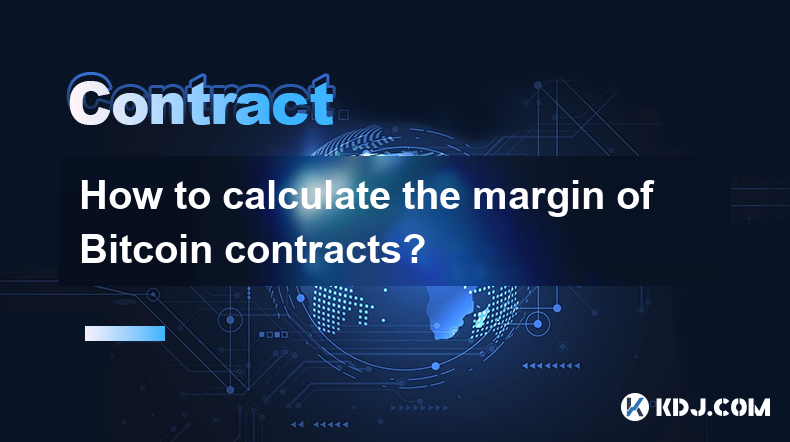-
 Bitcoin
Bitcoin $84,514.1750
0.43% -
 Ethereum
Ethereum $1,592.3644
0.42% -
 Tether USDt
Tether USDt $0.9999
0.02% -
 XRP
XRP $2.0784
-0.80% -
 BNB
BNB $592.3913
0.98% -
 Solana
Solana $134.5627
2.18% -
 USDC
USDC $0.9999
0.00% -
 Dogecoin
Dogecoin $0.1566
0.70% -
 TRON
TRON $0.2435
-1.92% -
 Cardano
Cardano $0.6196
0.09% -
 UNUS SED LEO
UNUS SED LEO $9.1443
0.41% -
 Chainlink
Chainlink $12.6177
1.51% -
 Avalanche
Avalanche $19.1279
-0.07% -
 Toncoin
Toncoin $3.0098
1.82% -
 Stellar
Stellar $0.2440
2.00% -
 Shiba Inu
Shiba Inu $0.0...01208
2.39% -
 Hedera
Hedera $0.1656
3.48% -
 Sui
Sui $2.1327
2.01% -
 Bitcoin Cash
Bitcoin Cash $342.4313
3.75% -
 Polkadot
Polkadot $3.7227
2.67% -
 Litecoin
Litecoin $75.9959
1.54% -
 Hyperliquid
Hyperliquid $16.7886
2.49% -
 Dai
Dai $1.0000
0.01% -
 Bitget Token
Bitget Token $4.3774
0.71% -
 Ethena USDe
Ethena USDe $0.9991
0.01% -
 Pi
Pi $0.6202
2.28% -
 Monero
Monero $216.8067
0.20% -
 Uniswap
Uniswap $5.2136
0.81% -
 Pepe
Pepe $0.0...07185
0.00% -
 OKB
OKB $50.3686
-0.17%
How to calculate the margin of Bitcoin contracts?
Bitcoin contract trading requires understanding margin (collateral), initial margin (to open), maintenance margin (minimum to hold), and margin calls (when margin falls below maintenance). Leverage amplifies profits and losses, impacting margin calculations which vary by exchange and include factors like volatility.
Mar 24, 2025 at 03:14 am

Key Points:
- Understanding Bitcoin contract leverage and its impact on margin calculations.
- Defining margin, initial margin, maintenance margin, and margin call.
- Calculating margin requirements for long and short positions.
- Exploring different margin calculation methods used by exchanges.
- Factors influencing margin requirements beyond leverage.
How to Calculate the Margin of Bitcoin Contracts?
Trading Bitcoin contracts involves leveraging borrowed funds to amplify potential profits (and losses). Understanding margin calculations is crucial to avoid liquidation. The core concept revolves around the relationship between the contract's value, your leverage, and the margin you must maintain.
What is Margin?
Margin is the collateral you deposit with an exchange to secure a Bitcoin contract. It acts as a guarantee against potential losses. Insufficient margin leads to a margin call, forcing you to deposit more funds or face liquidation – the automatic closure of your position to cover losses.
Initial Margin vs. Maintenance Margin
Initial margin is the amount required to open a contract. Maintenance margin is the minimum margin you must maintain throughout the contract's life. If your margin falls below the maintenance level, a margin call is triggered.
Calculating Margin for Long Positions:
Let's say you open a long position (betting on Bitcoin's price increase) with 1 BTC contract at $30,000 per BTC, using 5x leverage.
- Contract Value: 1 BTC * $30,000/BTC = $30,000
- Margin Requirement (Initial): $30,000 / 5x = $6,000
- Maintenance Margin: This is typically a percentage of the initial margin, set by the exchange (e.g., 50% of $6,000 = $3,000).
Calculating Margin for Short Positions:
For a short position (betting on Bitcoin's price decrease), the calculation is the same. The contract value, leverage, and margin requirements remain consistent regardless of whether you're long or short.
Different Margin Calculation Methods:
Exchanges might use slightly different methods. Some use a simple leverage-based calculation as shown above. Others might incorporate factors like the volatility of Bitcoin, using more complex algorithms. Always check your exchange's specific margin calculation details.
Factors Affecting Margin Requirements:
Several factors beyond leverage influence margin requirements. These include:
- Volatility: Higher volatility generally leads to higher margin requirements.
- Exchange Policies: Different exchanges have varying margin policies.
- Contract Specifications: The specific terms of the contract influence margin calculations.
- Risk Management: The exchange's risk management system adjusts margin requirements dynamically.
Understanding Leverage and its Impact:
Leverage magnifies both profits and losses. Higher leverage means a smaller initial margin, but it also increases the risk of liquidation. Using 10x leverage instead of 5x would halve your initial margin requirement but double your potential losses if the price moves against you.
What Happens During a Margin Call?
A margin call indicates your margin has fallen below the maintenance level. You must deposit more funds to bring your margin back above the maintenance threshold. Failure to do so results in liquidation. The exchange will automatically close your position to cover losses, potentially resulting in significant losses.
How to Avoid Margin Calls:
- Use Lower Leverage: Start with conservative leverage levels to reduce risk.
- Monitor Your Positions: Regularly check your margin levels and adjust your positions accordingly.
- Understand Volatility: Be aware of Bitcoin's price volatility and adjust your strategy.
- Use Stop-Loss Orders: Set stop-loss orders to automatically close your position if the price moves against you.
- Proper Risk Management: Implement robust risk management strategies.
Frequently Asked Questions:
Q: What happens if I don't meet a margin call?
A: If you fail to meet a margin call, the exchange will automatically liquidate your position to cover losses. This can lead to significant losses.
Q: Can I choose my leverage?
A: Yes, most exchanges offer a range of leverage options. However, higher leverage increases risk.
Q: How is maintenance margin calculated?
A: Maintenance margin is usually a percentage of the initial margin, set by the exchange. This percentage varies depending on the exchange and the specific contract.
Q: Does the margin calculation differ for perpetual contracts?
A: While the fundamental principle remains the same, perpetual contracts often incorporate funding rates into the margin calculation, adding another layer of complexity.
Q: What are the risks of high leverage?
A: High leverage significantly amplifies both profits and losses. It increases the risk of liquidation even with small price movements against your position.
Q: Where can I find the exact margin requirements for a specific exchange?
A: Each exchange will specify its margin requirements on its platform, usually within the trading interface or contract specifications. Review the terms and conditions carefully.
Disclaimer:info@kdj.com
The information provided is not trading advice. kdj.com does not assume any responsibility for any investments made based on the information provided in this article. Cryptocurrencies are highly volatile and it is highly recommended that you invest with caution after thorough research!
If you believe that the content used on this website infringes your copyright, please contact us immediately (info@kdj.com) and we will delete it promptly.
- Binance Remains the Top Crypto Exchange Despite Market Challenges in Q1 2025
- 2025-04-18 22:10:13
- Justin Sun Stands Firm on Ethereum Amid Market Dip
- 2025-04-18 22:10:13
- Ethereum (ETH) market trends have changed as big players made significant operations across the exchanges.
- 2025-04-18 22:05:13
- Binance Coin (BNB) is on track to reclaim one of its most fundamental price levels
- 2025-04-18 22:05:13
- The Ultimate Guide to Making Spectacular Profits by Investing in Ethereum (ETH) and Mutuum Finance (MUTM)
- 2025-04-18 22:00:12
- BYDFi Launches New Web3 Product—MoonX, a Smart Trading Tool Specifically Designed for MemeCoin Investors
- 2025-04-18 22:00:12
Related knowledge

How does Tail Protection reduce the loss of liquidation?
Apr 11,2025 at 01:50am
Introduction to Tail Protection in CryptocurrencyTail Protection is a mechanism designed to mitigate the risks associated with liquidation in cryptocurrency trading. Liquidation occurs when a trader's position is forcibly closed by the exchange due to insufficient margin to cover potential losses. This often happens in leveraged trading, where traders b...

What are the consequences of an imbalance in the long-short ratio?
Apr 13,2025 at 02:50pm
The long-short ratio is a critical metric in the cryptocurrency trading world, reflecting the balance between bullish and bearish sentiments among traders. An imbalance in this ratio can have significant consequences on the market dynamics, affecting everything from price volatility to trading strategies. Understanding these consequences is essential fo...

How to judge the market trend by the position volume?
Apr 11,2025 at 02:29pm
Understanding how to judge the market trend by position volume is crucial for any cryptocurrency trader. Position volume, which refers to the total number of open positions in a particular cryptocurrency, can provide valuable insights into market sentiment and potential price movements. By analyzing this data, traders can make more informed decisions ab...

Why does a perpetual contract have no expiration date?
Apr 09,2025 at 08:43pm
Perpetual contracts, also known as perpetual futures or perpetual swaps, are a type of derivative product that has gained significant popularity in the cryptocurrency market. Unlike traditional futures contracts, which have a fixed expiration date, perpetual contracts do not expire. This unique feature raises the question: why does a perpetual contract ...

Why is the full-position mode riskier than the position-by-position mode?
Apr 13,2025 at 03:42pm
Why is the Full-Position Mode Riskier Than the Position-by-Position Mode? In the world of cryptocurrency trading, the choice between full-position mode and position-by-position mode can significantly impact the risk profile of a trader's portfolio. Understanding the differences between these two modes is crucial for making informed trading decisions. Th...

How is the liquidation price calculated?
Apr 12,2025 at 01:35am
Introduction to Liquidation PriceLiquidation price is a critical concept in the world of cryptocurrency trading, particularly when dealing with leveraged positions. Understanding how this price is calculated is essential for traders to manage their risk effectively. The liquidation price is the point at which a trader's position is forcibly closed by th...

How does Tail Protection reduce the loss of liquidation?
Apr 11,2025 at 01:50am
Introduction to Tail Protection in CryptocurrencyTail Protection is a mechanism designed to mitigate the risks associated with liquidation in cryptocurrency trading. Liquidation occurs when a trader's position is forcibly closed by the exchange due to insufficient margin to cover potential losses. This often happens in leveraged trading, where traders b...

What are the consequences of an imbalance in the long-short ratio?
Apr 13,2025 at 02:50pm
The long-short ratio is a critical metric in the cryptocurrency trading world, reflecting the balance between bullish and bearish sentiments among traders. An imbalance in this ratio can have significant consequences on the market dynamics, affecting everything from price volatility to trading strategies. Understanding these consequences is essential fo...

How to judge the market trend by the position volume?
Apr 11,2025 at 02:29pm
Understanding how to judge the market trend by position volume is crucial for any cryptocurrency trader. Position volume, which refers to the total number of open positions in a particular cryptocurrency, can provide valuable insights into market sentiment and potential price movements. By analyzing this data, traders can make more informed decisions ab...

Why does a perpetual contract have no expiration date?
Apr 09,2025 at 08:43pm
Perpetual contracts, also known as perpetual futures or perpetual swaps, are a type of derivative product that has gained significant popularity in the cryptocurrency market. Unlike traditional futures contracts, which have a fixed expiration date, perpetual contracts do not expire. This unique feature raises the question: why does a perpetual contract ...

Why is the full-position mode riskier than the position-by-position mode?
Apr 13,2025 at 03:42pm
Why is the Full-Position Mode Riskier Than the Position-by-Position Mode? In the world of cryptocurrency trading, the choice between full-position mode and position-by-position mode can significantly impact the risk profile of a trader's portfolio. Understanding the differences between these two modes is crucial for making informed trading decisions. Th...

How is the liquidation price calculated?
Apr 12,2025 at 01:35am
Introduction to Liquidation PriceLiquidation price is a critical concept in the world of cryptocurrency trading, particularly when dealing with leveraged positions. Understanding how this price is calculated is essential for traders to manage their risk effectively. The liquidation price is the point at which a trader's position is forcibly closed by th...
See all articles



























































